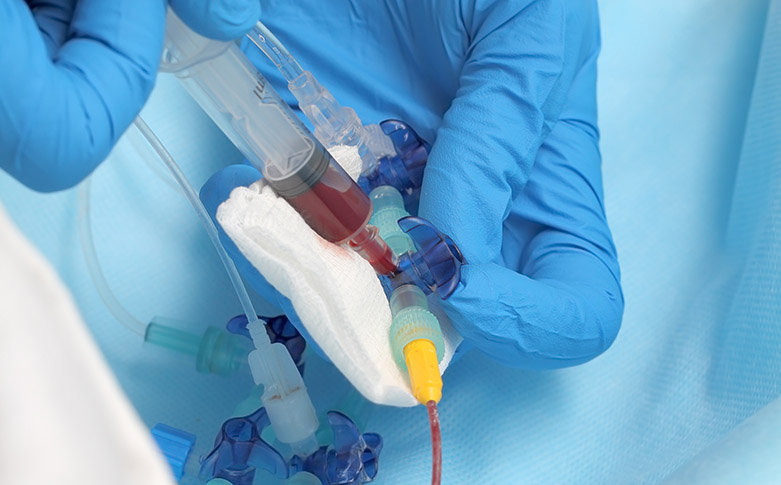
Hiking is an outstanding exercise for the mind and body, but even if you’re a very careful person, picking the safest of trails, you might still get injured. That’s why it’s important to know what to do, at the very least for the most common hiking injuries. In this article, we’ll tell you what these are and discuss how to mend them until help arrives.
Your first aid kit
The first thing you need to do is remember to pack your first aid kit. You should check that all the basics are there each time you hike, but you should also frequently check expiration dates and replace old medicine.
Getting the best first aid kit gives you the assurance of safety, and it spares you the trouble of finding/ packing the injury-treating equipment on your own. The things you need inside are:
• Antiseptic.
• Bandages.
• Blister plasters.
• Duct tape.
• Elastic strap.
• Gauze.
• Gloves.
• Medicine.
• Safety Pins.
• Scissors.
• Tape.
• Tweezers.
• Wipes
Knee, shoulder or back pain
If you’re doing too much effort, and not maintaining a good posture while hiking, maybe even carrying more weight than you can handle without stopping enough, you can develop serious knee pain. The problem areas that require professional help are located:
• Above, behind or under the knee cap.
• Between your shoulder blades.
• At the front of your shoulders.
• In your lower back area.
The things you need to do before you get help are:
1. Stop immediately if you can.
2. Consider lying down altogether if you’re experiencing back issues, but find an even ground.
3. If you’re not in a safe enough environment and need to continue your hike, use a hiking pole or a walking stick.
4. Don’t put too much pressure on the hurt knee, if that’s your problem spot, try to use your arms and the other leg to move around.
5. Ask someone else from your group to carry your backpack, or simply give it up.
6. Take an over the counter pain reliever to reduce pain.
7. Apply a local anti-inflammatory if there’s any swelling or redness.
8. Reduce outside knee cap pain by massaging your outer thigh.
Ankle sprains
These are difficult to handle while walking, but you might need to do that if you can’t stop. If you’re not already wearing a reliable pair of hiking boots, ask someone in your group if they can lend you a pair. Or maybe grab them from your backpack.
If you have to keep moving, try to step only on even ground, without putting too much pressure on the sprained ankle. You can use hiking poles or walking sticks to help you move better, without stepping too much on the bad leg.Another good idea is to create an improvised splint from two sticks and tie them with a bandage from your first aid kit. That should prevent your ankle from moving too much and making matters worse.
Another good idea is to create an improvised splint from two sticks and tie them with a bandage from your first aid kit. That should prevent your ankle from moving too much and making matters worse.
Once you get to the camp, follow the RICE method, which is an acronym for:
1. Rest. Stop moving altogether for the day, or until specialized help arrives.
2. Ice. If you don’t have any ice, you can use cold water compresses or even place your foot in a nearby stream of water.
3. Compression. This step benefits the use of an elastic bandage from your first aid kit. The purpose is to keep your ankle stable and supported, but don’t make the bandage too tight.
4. Elevation. Keep your foot elevated, so the blood flow doesn’t get to the sprain, which would inflame your ankle even more.
Cuts
These injuries are really frequent when you’re hiking, so don’t neglect the idea of it happening to you. You might use your knife or ax wrong when cutting through brush, or you might grab a sharp rock without being careful.
The problem with cuts is that they can get infected without the proper care. If they’re too deep, they might even prevent you from moving.
1. Clean the wound with soap and lukewarm water.
2. Disinfect the wound with an antiseptic.
3. Use the tweezers to take out any remaining splinters.
4. Grab a tourniquet and tie it above your cut if it’s a bigger wound in order to prevent bleeding.
5. Place a bandage on your injury, but make sure you change it frequently. Smaller cuts might not even need a bandage, and letting them air-dry helps faster healing.
6. If you notice any swelling or redness, take an anti-inflammatory like Ibuprofen.
7. In the case of a more serious cut that gets infected and gives you fever, you might need to take an antipyretic to reduce fever.
Bug or snake bites
These can prove dangerous too, especially if you’ve been bitten by a poisonous animal. So it’s best if you notice the insect or snake that bit you, and remember its characteristics in case you develop nasty symptoms like redness, inflammation, dizziness or fever.
The steps you need to take are:
1. Take off any clothes around the bite area.
2. Clean and disinfect the bite area, but don’t flush it with water.
3. Don’t try to suck out the poison and spit it after.
4. Improvise a splint to protect the bite.
5. Keep your bite area down, to minimize the risk of the poison spreading, but don’t use a tourniquet that would restrict blood flow too much.
6. Use an anti-inflammatory directly on the area if it becomes red or swollen.
7. Take an antipyretic to reduce fever.
8. You might need anti-allergy medication if the bite triggers an allergic reaction.
9. Put cold compresses on the bite area.
No injuries are small injuries
That said, don’t forget there aren’t small injuries when it comes to hiking. Even the smallest of blisters might become infected, which might immobilize you. Remember the basic principles that require you to clean, disinfect and rest your injury, without covering it or restricting blood flow unnecessarily.
And if we’ve missed something in this article, let us know. Which serious injuries did you deal with when hiking? How did you treat them? Let us know in the comments.

















